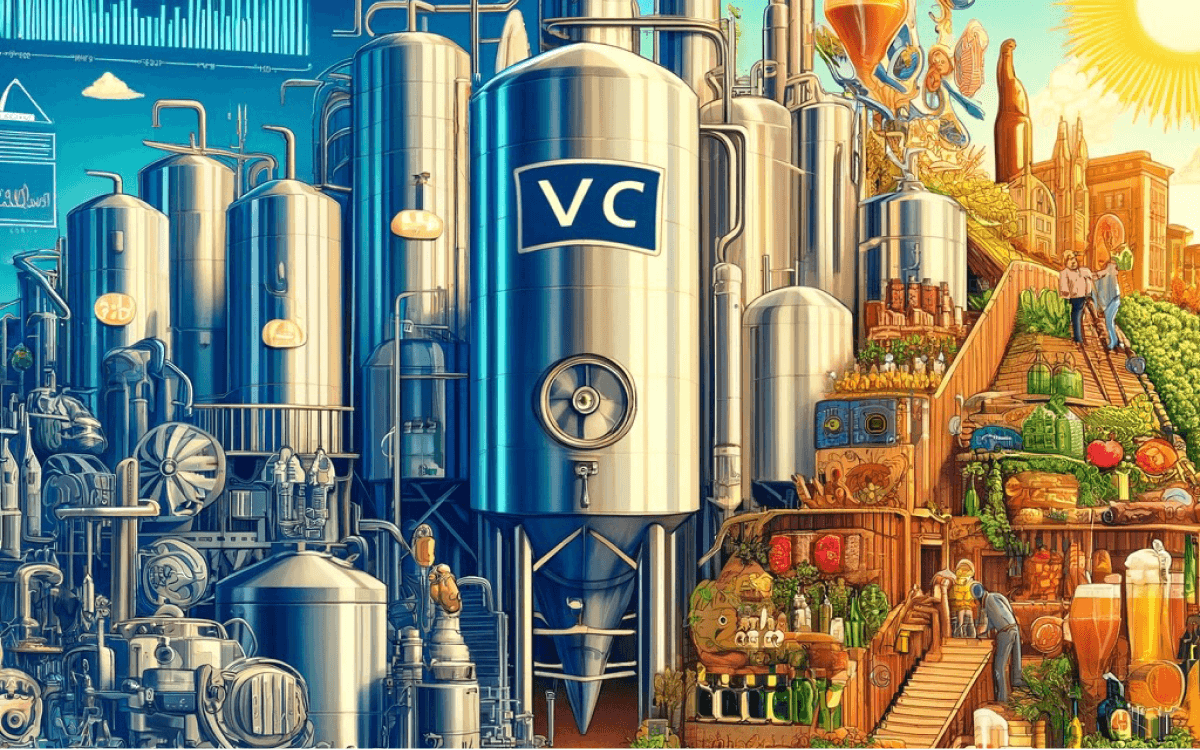


Revisiting the Craft Beer Metaphor for the VC Industry
When we started NextView back in 2012, we often used the metaphor of the beer industry to describe the evolution of the VC business. In a nutshell, the argument was that all industries go from being a cottage industry to one that is industrialized. A few big players emerge that compete on scale and scope, much like AB Inbev in the beer industry and the megafunds in venture. The best way to compete in this world was to pursue a craft strategy on the opposite side of the spectrum focused on small scale production of high-quality products. At the time, we pointed to Dogfish Head and Stone Brewing as folks who were pursuing this approach, similar to the OG seed investors like First Round and Baseline.
At the time, this metaphor really rang true and resonated with both founders and LPs. In the subsequent years, we moved away from this metaphor for a variety of reasons. But market forces continued to drive these industries to evolve in similar ways. I recently revisited this comparison and realized that in the subsequent decade, the evolution of the beer industry continues to mirror the venture business in some very interesting ways.
Elevated Product Quality
The first parallel is that in both industries, the “product” has been elevated nearly across the board. Folks who want to buy a bud light can still do so, but AB Inbev also owns Goose Island, which is a reasonably solid product. Craft brewers in the early years varied widely in terms of quality, but today, anyone that has survived is producing pretty good stuff. Even the cult-like, cream of the crop products of the past like Heady Topper are not miles removed from what unknown brands or mega producers are able to put forward.
Similarly, I’d argue that the early-stage venture “product” has elevated across the board. A lot of offerings that were innovative at one time are table stakes today. VC’s across the board have generally upped their game and are much more involved in the startup ecosystem and with their portfolios. Standing out with things like content, terms, speed, events, etc is harder and harder, even amid the most recent market correction. In retrospect, this was to be expected as any competitive market matures. Competitors learn and adapt, products improve, and customers are more satisfied.
The Big Got Bigger but in Different Ways
The second parallel is that the large scale players have increased in scale quite dramatically. AB Inbev was huge back in 2012 but is only larger today. The same goes for Molson Coors, as well as the mega international brands like Heineken. However, one major difference between the beer and venture industries is around organic growth and consolidation. In the beer industry, most of the growth of mega brewers occurred through M&A. This happened both in term of large-scale mergers (Coors and Miller for example) as well as via acquisition of craft players (like Heinekin’s acquisition of Lagunitas). Within venture, some rumblings of similar combinations have brewed from time to time. Most notable was the near merger between KP and Social Capital and more recently, General Catalyst’s merger with La Famiglia. But consolidation has not happened at nearly the same rate.
I’d argue that the reason for this is that the underlying venture industry has seen much more organic growth over the last 12 years. From 2012 to 2021, VC dollar inflows went from about $25B to over $128B in 2021. These excesses allow large funds to continue to grow without needing to pay a huge multiple to acquire a new platform. And smaller funds had the opportunity to continue to grow independently without the need to be attached to a larger platform. Whether this dynamic will change in the coming years remains to be seen. My prediction is that we will gradually see more consolidation in venture if a) underlying inflows into the category slow over a longer period of time and if b) more asset value is created by smaller funds that integrate proprietary software or data in their businesses.
The Proliferation and Retraction of Craft Brands
The third parallel between the beer industry and the VC industry is the proliferation and subsequent retraction of brands. Within the beer industry, there was an explosion of microbrewers that peaked in 2017. Since that time, new entrants have slowed and closures are up. However, it takes a while to kill a small craft brewer, and so the actual number of players continues to be large even if many players are failing to thrive. The same can be said of the venture industry, but time shifted forward thanks for the covid-induced bubble in 2020 and 2021. In our industry, we saw a flood of seed funds that entered the market, and the bubble times meant that even marginal players saw reasonable results. This drove more and more new entrants into the market until the music stopped in 2022. Since then, you have quietly heard of funds slowing down dramatically or pretending to be in business while barely making any new investments. Like the beer industry, a small fund can hang on for a long time before turning out the lights. And so the total number of players in the market remains high, even though practically speaking, the number of players actively participating and competing today is a fraction of what we saw just a few years ago.
In the midst of the rise and fall of craftbrewers, what I think we’ve seen is that a small number of brands have risen to enviable positions within this challenging category. These brands have been able to run a goldilocks playbook – scaling attractively but not irresponsibly, expanding SKUs and distribution without sacrificing quality, and really cementing their brand love among consumers. I live on the east coast, so a few players of this profile that come to mind are Lawsons and my personal favorite Treehouse. These brands have been able to grow, but also showed incredible restraint. Treehouse for example continues to only sell beer on premise, eschewing what would certainly huge demand by retailers and restaurants for their products. Similarly, there are probably a few dozen established, high-quality, micro-VC’s that have shown similar restraint over this recent period of excess and continue to practice their distinctive brand of artisanal venture capital through highly varied market conditions.
The Rise and Success of Alternatives
The fourth and perhaps most interesting parallel between the two industries is the rise of new products and brands that satisfy similar customer needs but in very different ways. Within the beer industry, I think of two categories in particular – the rapid growth of hard seltzer products and the rise in non-alcoholic alternatives. In both cases, these products initially targeted an underserved niche amongpotential beer drinkers but have expanded to the point where they have taken significant share within the broader beverage category.
The same can be said for certain players in the venture industry. One could compare YC to White Claw or High Noon. The underlying product is still a carbonated alcoholic beverage, but a fundamentally different product for customers. This category has been wildly successful, and the best players have been able to rapidly overtake even the best microbrewers and approach the scale of the most significant mainstream brands. On the non-alcoholic side, you have brands like Athletic Brewing and Liquid Death that offer some of the benefits of mainstream beer products without the negative side effects. This can be compared to Indie VC and perhaps other players that will emerge out of the most recent market correction.
While this comparison within the craft beer industry and early-stage venture has been fun, I’m somewhat surprised as how closely the two industries have tracked over the past 12 years. Not everything has been identical, but many of the broad themes rhyme. As I shared yesterday with a Harvard class that I was speaking at, it’s easy to forget that venture capital is a business like any other. And that like any business, we exist within a broader market with forces that have at least as much influence on our outcomes as any firm decision or strategy. These forces are dynamic and ever evolving, but we aren’t the first industry nor the last to see these same dynamics play out. And so it’s constructive to be a student of other industries and to draw parallels from other markets to perhaps help us see around the next corner.





